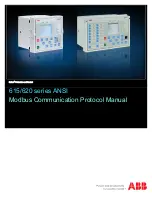
9
60-2035—9
RA890G
SERVICE • TROUBLESHOOTING
1. Some relay and time contacts are plated with gold for
increased reliability. Burnishing can quickly remove the
plating.
2. The radii or points of the contacts are designed with
specific shapes to best serve the intended functions of the
contacts. Burnishing can rapidly alter contact configurations.
3. Using an abrasive loosens fine particles of the contact
material that adhere to the surface of the contact and increase
its resistance.
4. Contact specifications (contact pressures, pressback,
and gaps) are carefully controlled during manufacturing to
assure maximum contact life. Burnishing can easily change
these specifications.
Troubleshooting
CAUTION
1. Use extreme care while troubleshooting the
RA890G; line voltage is present on some termi-
nals and contacts when power is on.
2. Disconnect the power supply before removing
the cover, cleaning contacts, removing the
RA890G from the subbase, or reinstalling the
RA890G on the subbase.
When trouble occurs in the heating system and its cause is
not immediately apparent, the serviceman can apply the
following step-by-step checkout to locate the cause of most
problems.
TEST STANDBY OPERATION
1. Set controller not to call for heat (decrease setpoint).
2. Reset the safety switch by pushing in and then releas-
ing the purple safety switch reset button.
3. Close the line switch.
4. Check for line voltage between terminals 6 and 2, and
between 1 and 2. (Voltage will be zero at terminal 6 if a line
voltage controller is used; check for line voltage when
controller is set to call for heat.)
a. Voltage must be 10 to -15 percent of the rated
voltage.
b. If voltage is zero, check the power supply line for
blown fuses, open circuit, or open disconnect switch.
Check limit contacts for continuity.
5. Check position of flame relay. (If a line voltage con-
troller is used, observe the action of the flame relay on a call
for heat.)
a. If the flame relay is out, proceed to step 6.
b. If the flame relay is pulled in, check for a flame
simulating condition.
1) Insert 123514B Flame Simulator Plug into test
jack; touch the other end to the F terminal of the
RA890G.
2) If flame relay holds in, replace the RA890.
3) If flame relay drops out, trouble is in the flame
detector or external circuit. Replace the detector.
TEST STARTING OPERATION
6. Set controller to call for heat (increase setpoint).
7. Observe load relay for pull-in.
a. Load relay pulls in to light pilot and start burner;
proceed to step 11.
b. Load relay does not pull in; proceed to step 8.
c. Load relay pulls in but does not light or burner does not
start; proceed to step 10.
8. Check line voltage controller, if used, and check the
limit; if the load relay does not pull in, check again for power
at terminal 6 with the controller calling for heat. If there is
power at terminal 6 and a line voltage controller is used,
clean all relay contacts. Replace the RA890 if the relay still
does not pull in. If a low voltage controller is used, proceed
to step 9.
9. Check the low voltage controller, if used, by jumping
T-T.
a. Load relay pulls in with T-T jumpered; check control-
ler and external circuit.
b. Load relay does not pull in with T-T jumpered; clean
all relay contacts. Replace the RA890 if the load relay
still does not pull in.
10. If the load relay pulls in but the pilot will not light or
the burner will not start, check voltage at terminals 3-2 or 4-2.
a. If no voltage at terminals 3-2 or 4-2; clean the relay
contacts. Replace the RA890 if trouble cannot be
corrected.
b. If normal line voltage at terminals 3-2 or 4-2, check
external burner, ignition, and valve circuits. Check
wiring, burner adjustment, ignition systems including
electrode spacing and location, oil quality, character
and efficiency of oil atomization, fuel supply pressure,
flame pattern, flame character and quality, pilot loca-
tion with respect to main burner, flame detector, or
other conditions that may delay lightoff.
TESTING FLAME DETECTING FUNCTION
11. Observe the flame relay (right relay) for pull-in when
flame is established.
a. Flame relay pulls in; proceed to step 13.
b. Flame relay does not pull in; proceed to step 12.
12. Check the flame relay with a 123514B Flame Simula-
tor, if available (follow the instructions with the simulator),
or check the following:
a. Perform a Flame Current Check (see Flame Current
Check section).
b. If the current is satisfactory, replace the RA890.
c. If the current is not satisfactory, consult the instruc-
tions packed with the flame detector.
OBSERVE SEQUENCING OPERATION
13. Observe the second stage oil valve or main gas valve
for opening when flame relay pulls in.
a. If valve does not open, check for line voltage at
terminals 2-5.
Summary of Contents for RA890G
Page 11: ...11 60 2035 9 ...






























